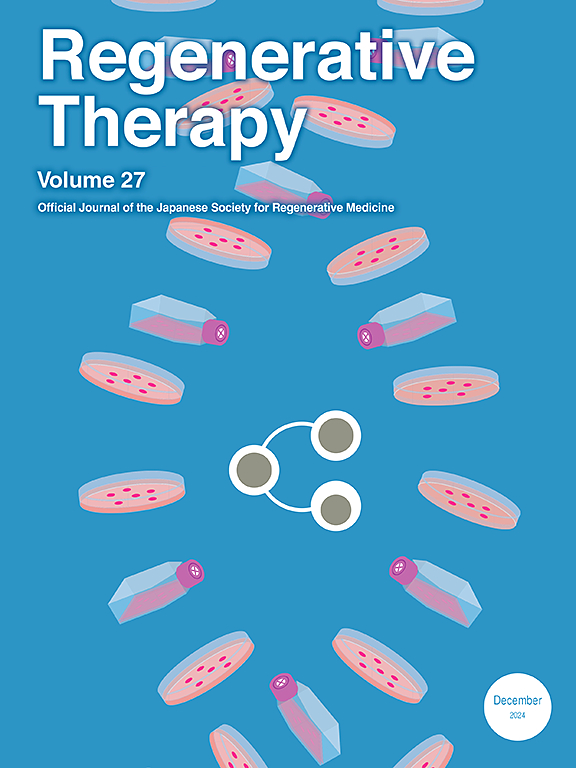Targeting p53-p21 signaling to enhance mesenchymal stem cell regenerative potential
IF 3.4
3区 环境科学与生态学
Q3 CELL & TISSUE ENGINEERING
引用次数: 0
Abstract
Mesenchymal stem cells (MSCs) are properties of self-renewal and differentiation potentials and thus are very appealing to regenerative medicine. Nevertheless, their therapeutic potential is frequently constrained by senescence, limited proliferation, and stress-induced apoptosis. The key role of the p53–p21 biology in MSC biology resides in safeguarding genomic stability while promoting senescence and limiting regenerative capacity upon over-activation demonstrated. This pathway is a key point for improving MSC function and exploiting the inherent limitations. Recent advances indicate that senescence can be delayed by targeting the p53-p21 signaling and improved MSC proliferation and differentiation capacity. PFT-α pharmacological agents transiently inhibit p53 from increasing proliferation and lineage-specific differentiation, while antioxidants such as hydrogen-rich saline and epigallocatechin 3 gallate (EGCG) suppress oxidative stress and attenuate p53 p21 signaling. Genetic tools like CRISPR-Cas9 and RNA interference also precisely modulate TP53 and CDKN1A expression to optimize MSC functionality. The interplay of p53-p21 with pathways like Wnt/β-catenin and MAPK further highlights opportunities for combinatorial therapies to enhance MSC resilience and regenerative outcomes. This review aims to offer a holistic view of how p53–p21 targeting can further the regenerative potential of MSCs, resolving senescence, proliferation, and stress resilience towards advanced therapeutics built on MSCs.
求助全文
约1分钟内获得全文
求助全文
来源期刊

Regenerative Therapy
Engineering-Biomedical Engineering
CiteScore
6.00
自引率
2.30%
发文量
106
审稿时长
49 days
期刊介绍:
Regenerative Therapy is the official peer-reviewed online journal of the Japanese Society for Regenerative Medicine.
Regenerative Therapy is a multidisciplinary journal that publishes original articles and reviews of basic research, clinical translation, industrial development, and regulatory issues focusing on stem cell biology, tissue engineering, and regenerative medicine.
 求助内容:
求助内容: 应助结果提醒方式:
应助结果提醒方式:


